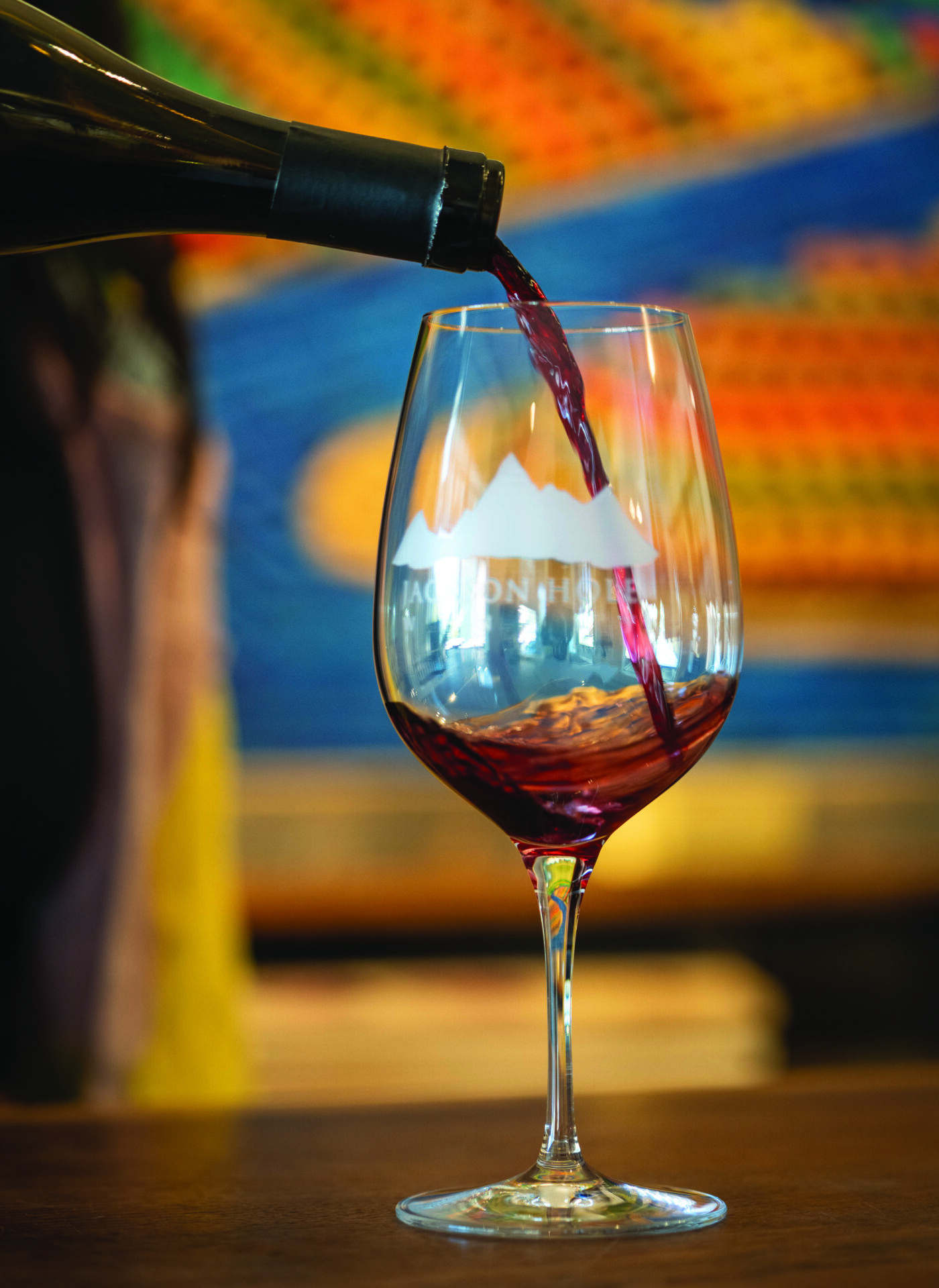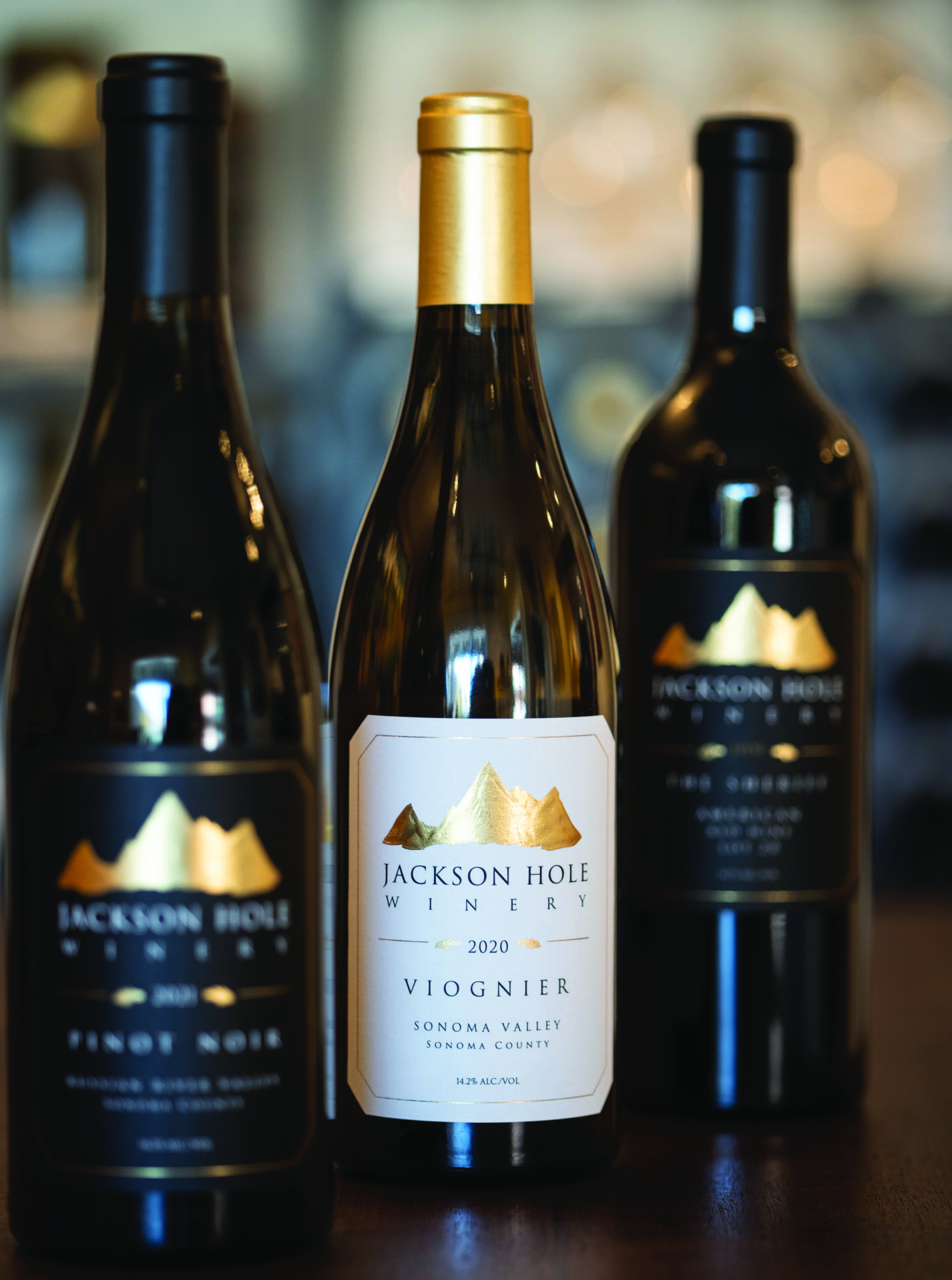Read The
Current Issue
Wyoming Wine
The grapes come from California, but Jackson Hole Winery does everything else to make its award-winning wines in a barn in Wilson.
// By Helen Olsson

Jackson Hole Winery has two tasting rooms—one in downtown Jackson and one at the winery in Wilson. Photo by Kathryn Ziesig
During college at Sonoma State University, Anthony Schroth took a wine business class that required an internship. Stomping grapes at a Napa Valley winery planted the seed for an audacious idea: to start a winery at an elevation of 6,229 feet on his family’s 17-acre property in Jackson Hole. “I knew I wanted to have my own label,” Schroth says. The property’s 100-year-old dairy barn with Grand Teton views, he figured, would be an idyllic spot for a tasting room.
“I thought the artistry and process of winemaking was just so fascinating,” says Schroth, whose senior project was developing a business plan for starting a winery. He tried growing vines in Wyoming, but summer frosts and a short growing season made it impossible. “Random cold snaps would just wipe out the vineyard,” he says. The solution: harvest grapes from California; truck them in bins with dry ice pellets; and then crush, ferment, hand-press, and barrel-age the wine in Wyoming.
What made it difficult to grow grapes in Wyoming turned out to be a boon to the wine’s quality. Thin air combined with cool temps translates to longer fermentation and barrel-aging times. “The longer fermentation allows us to get good tannin extraction out of the skin for color and flavor,” Schroth says. Cool temps during the barrel aging also mean fewer sulfites are needed to control microbial activity.
Jackson Hole Winery produces some 4,000 cases yearly, hosting wine tastings in an in-town tasting room and, by reservation, in the winery’s tongue-and-groove barn. (Tastings start at $35 per person.) You’ll find the wine at most restaurants around town, including Bin22, Figs, and Gather. Pick up a bottle at wine shops like Westside Wine & Spirits or Plaza Liquors. Or join the Wolfpack Wine Club to have bottles delivered twice yearly to your door. jacksonholewinery.com; 307/201-1057

Tasting Notes: Three to Try
2022 Viognier
The winery’s viognier is a dry, crisp white varietal that earned Best of Class at the 2019 Sonoma Harvest Fair. The grapes are crushed in Sonoma County and then shipped to Wyoming to finish the winemaking process. “It’s one of my favorite white wines,” Schroth says. “It has beautiful aromatics with hints of white peach and apricot. It’s just delicious.” The wine is produced in a stainless steel tank with a single fermentation that helps retain a crisp acidity. Fun fact: the viognier grape was near extinction in the mid-1980s, with just 80 acres of the vines remaining. $30
2020 Pinot Noir
The Schroths farm their pinot noir grapes on dedicated plots in California’s Russian River Valley. This perennially gold-award-winning wine offers a complex bouquet of aromas—black cherry and strawberry with light spice undertones. The wine is aged for 18 months in 35 percent new French oak barrels, delivering a refined wine with a smooth, elegant finish. $44
2019 The Sheriff
The Sheriff is a Napa Valley cabernet sauvignon—a rich, layered, and bold wine that pairs great with steak. Aging for 24 months in 70 percent new French oak barrels gives it depth and complexity. “It’s a wine we’re experimenting with,” Schroth says. “The fruit is very expensive, but we’re really excited about it.” It has a big, round mouth feel and notes of blackberry, black currant, and black licorice. Although it’s ready to drink now, this bottle promises to age well. $115 JH




